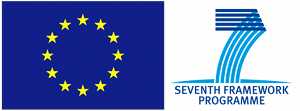Press Releases
FP7-ESWIRP Students Initiative
The FP7 infrastructure project ESWIRP (European Strategic Windtunnels Improved Research Potential) is co-funded by the EU for providing transnational access to the three strategic facilities ETW, DNW-LLF and ONERA-S1MA. Within ESWIRP, international consortia have been elected for performing dedicated scientific investigations using these high quality facilities.
To support education of future scientists and engineers, the elected consortia now offer students the opportunity to attend the following wind-tunnel tests:
- Time-Resolved Wake Measurement of Separated Wing Flow & Wall-Interference Investigations (European Transonic Windtunnel, Cologne ETW, Germany);
- New Mexico (DNW-LLF, Marknesse, The Netherlands);
- Investigation of the Small Scale Statistics of Turbulence in S1MA (ONERA-S1MA, Modane, France).
The students should be fluent in English, must be members of the EU or its Associated Member States and come from other institutions than those involved in the elected ESWIRP consortia. They will participate the tests on site, while travel and accomodation expenses are reimbursed. The application deadline is 18 March 2013; a notification that an applicant is elected for participation will be given until 15 April 2013.
The Trans National Access page of www.eswirp.eu presents further details about the planned investigations, consortia and student participation conditions.
This work receives funding from the European Union FP7/2007-2013 under grant agreement no 227816.
Background
ETW - Pushes the Limits
Wind tunnels, using scaled down aircraft models, are the major source of aerodynamic design data for new aircraft projects. Wind tunnels are indispensable tools for aerodynamic research and aircraft development; they complement and validate flow simulation methods on the most powerful computers.
ETW, the European Transonic Wind Tunnel, was designed and constructed by the four European countries France, Germany, Great Britain and The Netherlands. It is operated based on a non-profit policy by the ETW GmbH, founded in 1988. Its location in Cologne, Germany, is right in the middle of Europe.
European researchers and engineers harness ETW’s capabilities for advancing aeronautical science into aircraft innovation by accessing real-flight conditions in this cutting edge ground-test laboratory.
ETW is the worldwide leading wind tunnel for testing aircraft at real flight conditions. Aircraft performance and their flight envelope limits can be accurately determined with unique quality at ETW long before flight testing of a first prototype. This enables significant reductions in the technical and economic risks associated with the development of new aircraft. Manufacturers from all over the world take advantage of the exceptional features of this high-tech facility enhancing the performance, economic viability, and environmental friendliness of their future aircraft.
ETW – Erweitert Horizonte
Aerodynamische Entwurfsdaten für neue Flugzeugprojekte werden zu einem großen Teil aus Windkanaluntersuchungen an maßstäblich verkleinerten Flugzeugmodellen gewonnen. Windkanäle sind unverzichtbare Werkzeuge sowohl für die Strömungsforschung als auch für die Flugzeugentwicklung; sie ergänzen und validieren Verfahren zur Strömungssimulation auf modernsten Hochleistungsrechnern.
Der Europäische Transschall-Windkanal ETW ist eine transnationale Forschungseinrichtung in Köln. Er wurde von den vier Staaten Frankreich, Deutschland, Großbritannien und den Niederlanden entwickelt und gebaut. Betrieben wird er von der ETW GmbH, die als eigenständiges Non-Profit-Unternehmen 1988 gegründet wurde.
Der ETW erlaubt europäischen Forschenden und Ingenieur:innen, tatsächliche Flugzustände unter Laborbedingungen am Boden darzustellen, um wissenschaftliche Erkenntnisse zu erarbeiten und in Luftfahrtinnovationen zu überführen.
Der ETW ist der weltweit führende Windkanal, in dem Luftfahrzeuge unter wirklichkeitsgetreuen Flugbedingungen getestet werden können. Lange bevor der erste Prototyp für einen Flugtest zur Verfügung steht, können im ETW die Leistungsfähigkeit und die Flugbereichsgrenzen eines Neuentwurfs genauestens und mit einzigartiger Qualität bestimmt werden. Dies reduziert erheblich die technischen und wirtschaftlichen Risiken, die mit der Entwicklung neuer Luftfahrzeuge verbunden sind. Hersteller aus aller Welt nutzen die außergewöhnlichen Möglichkeiten dieser Hightech-Einrichtung, um die Leistungsfähigkeit, die Wirtschaftlichkeit und die Umweltfreundlichkeit ihrer zukünftigen Produkte nachhaltig zu verbessern.


